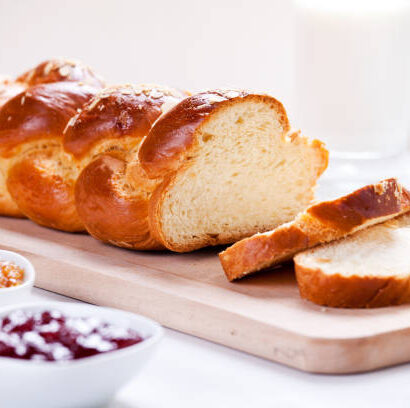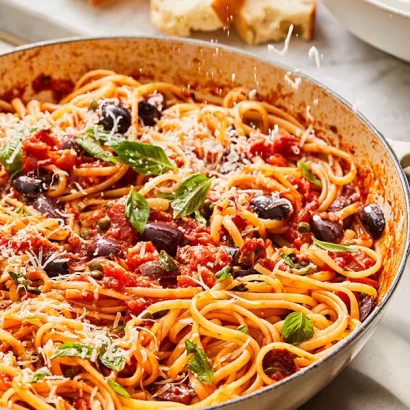
Homemade Brioche Bread Recipe: A Buttery French Delight Made at Home
With its buttery richness, soft texture, and slightly sweet flavor, brioche bread is a versatile bread that can be enjoyed in countless ways—from morning toast and sandwiches to luxurious desserts like French toast and bread pudding. This detailed guide will walk you through every step of making brioche bread at home, ensuring that your homemade brioche bread recipe turns out perfect each time.
What is Brioche Bread?
Originating in France, brioche is an enriched bread made with a high content of butter and eggs. This high-fat content gives brioche its signature tender crumb, golden crust, and rich flavor. Unlike lean breads such as baguettes or sourdough, which contain minimal fat, brioche is more like a pastry, often referred to as a “viennoiserie” in French baking, akin to croissants and Danish pastries.
The beauty of this bread lies in its versatility. It can be served as a simple breakfast bread with butter and jam, transformed into a gourmet sandwich, or used in desserts for an added touch of indulgence. If you’ve ever tasted brioche from a French bakery, you know how unforgettable it can be. Now, imagine being able to recreate that magic at home with this easy-to-follow recipe.
Jump to RecipeWhy Make Brioche Bread at Home?
While it’s easy to pick up a loaf of brioche from a bakery or grocery store, making your own brioche bread at home has its unique advantages:
- Freshness: Nothing beats the aroma and taste of freshly baked bread right from your oven.
- Quality Control: You get to choose high-quality ingredients, ensuring that your brioche is free from preservatives or additives.
- Customization: Adjust the sweetness, add flavors like vanilla or citrus zest, or even incorporate chocolate chips or dried fruits.
- Satisfaction: There’s a unique joy in mastering the art of bread-making, and brioche, with its rich texture, is an achievement worth celebrating.
How to Make Brioche Bread: A Step-by-Step Guide
Mastering this recipe involves patience and precision. While the recipe itself is straightforward, brioche requires time to rest and proof, allowing the flavors to develop and the texture to become light and airy.
Here’s a detailed breakdown of the process to ensure your brioche bread recipe turns out perfectly every time.
Ingredients for this recipe
To make the perfect homemade brioche bread, you’ll need:
- All-purpose flour – Provides the structure.
- Active dry yeast – The leavening agent that helps the dough rise.
- Lukewarm milk – Activates the yeast.
- Eggs – Adds richness and structure.
- Granulated sugar – Provides sweetness.
- Kosher salt – Enhances flavor.
- Butter – The star ingredient that gives brioche its buttery goodness.
- Egg wash – For a golden, shiny crust.
The Sponge Method: Building the Foundation
The key to an airy brioche lies in starting with a sponge. This is a pre-ferment made by mixing flour, yeast, and milk. Letting it sit allows the yeast to develop flavor and strength. After about 45 minutes, you’ll see air pockets forming, indicating that the yeast is active and ready for the next step.
Mixing and Kneading the Dough
Once your sponge is ready, it’s time to add the remaining flour, eggs, sugar, and salt. Using a stand mixer fitted with a dough hook ensures thorough mixing and kneading. The dough will initially seem sticky, but as you knead, it will become smooth, elastic, and shiny.
The gradual addition of butter is what sets brioche apart from other breads. Adding butter one tablespoon at a time ensures it is fully incorporated, resulting in a dough that is rich but not greasy.
Proofing: Letting the Dough Rest and Rise
Proofing is essential in any bread-making process, and for brioche, it’s no different. After kneading, the dough needs to rest and rise until doubled in size. You can choose to proof it at room temperature for a few hours or refrigerate it overnight for better flavor development.
Shaping and Baking: Bringing Brioche to Life
Once the dough has risen, it’s time to shape it. Dividing the dough into equal pieces and rolling them into logs gives brioche its classic look. Placing them in buttered loaf pans and allowing a second proof ensures a light, airy texture.
Brushing the loaves with an egg wash before baking gives brioche its iconic golden crust. Baking until the loaves are deep golden brown ensures a perfect finish, while an internal temperature of 190°F to 205°F guarantees they are fully cooked.
For detailed and precise step-by-step instructions, see the recipe card below.
Jump to RecipeTips for Perfect Brioche Bread at Home
- Use high-quality butter: The better the butter, the richer the flavor.
- Don’t rush the proofing: Allow the dough to rise fully for the best texture.
- Perform the windowpane test: Stretch a small piece of dough; if it forms a thin, translucent membrane without tearing, it’s ready.
- Refrigerate overnight for enhanced flavor: While not mandatory, this step deepens the flavor and makes the dough easier to work with.
Serving Suggestions
One of the best things about brioche bread is its versatility. Here are some serving ideas:
- Breakfast: Toasted brioche slices with butter and jam.
- Sandwiches: Use brioche for gourmet sandwiches or burgers.
- Desserts: Make French toast, bread pudding, or even brioche donuts.
- Snacks: Serve with cheese and charcuterie for an elegant snack.
FAQs About Brioche Bread Recipe
Q: What makes brioche bread different from regular bread?
A: Brioche is enriched with butter and eggs, giving it a soft, tender crumb and rich flavor compared to regular bread, which typically contains only flour, water, yeast, and salt.
Q: Can I use bread flour instead of all-purpose flour?
A: Yes, using bread flour will result in a slightly chewier texture, but all-purpose flour works well for a tender crumb.
Q: How long can homemade brioche bread be stored?
A: Brioche can be stored at room temperature for up to 3 days or frozen for up to 2 months when wrapped tightly.
Q: Can I make brioche bread without a stand mixer?
A: Yes, but it will require more time and effort to knead the dough by hand to achieve the same elasticity and smoothness.

Brioche Bread
Equipment
- Stand Mixer with Dough Hook: For kneading the dough.
- Mixing Bowls For preparing and proofing the dough.
- Plastic Wrap: To cover the dough during resting.
- Bench Scraper – For dividing the dough.
- Rolling Pin To flatten the dough pieces.
- 8×5-inch Loaf Pans – For baking the loaves.
- pastry brush For applying the egg wash.
Ingredients
For the Sponge:
- 1 cup all-purpose flour 128 grams
- 1 pckt active dry yeast 7 grams or 2¼ teaspoons
- ½ cup lukewarm milk 120 grams
For the Dough:
- 6 large eggs, room temperature 320 grams
- 3 cups all-purpose flour 384 grams
- ½ cup granulated sugar 105 grams
- 2 tsps Kosher salt 12 grams
- 2 sticks butter, softened plus more for pans , 227 grams or 1 cup
For the Egg Wash:
- 1 large egg
- 1 tbsp water
- Kosher or sea salt for sprinkling
Instructions
Make the Sponge:
- To the bowl of a stand mixer fitted with the hook attachment, add 1 cup flour, yeast, and milk. Using a spatula, mix until well-combined, then cover with plastic wrap and let sit for 45 minutes. Once the sponge has formed some air pockets, add in eggs, remaining 3 cups flour, sugar, and salt.
- Mix on medium speed until well combined, then gradually increase to medium-high speed and continue mixing until dough pulls away from the sides of the bowl and becomes shiny and elastic, scraping down bowl every 4 to 5 minutes, for about 10 to 13 minutes.
- With the mixer running, add in butter gradually, 1 tablespoon at a time, letting each tablespoon fully incorporate into the dough before adding the next, for 13 to 15 minutes. Continue mixing on medium-high speed for 5 to 7 minutes until the dough passes the windowpane test. Cover bowl with plastic wrap and let rest about 1 hour or doubled in size.
- To bake on the Next Day: Once the dough has doubled in size, punch down to deflate it completely, then cover again with a plastic wrap. Refrigerate overnight until you are ready to bake the next day. Follow instructions in the next step, letting the dough proof until doubled before baking, longer if needed, up to 2 hours 30 minutes.
- To bake on the Same Day: Once the dough has doubled in size, turn out onto a floured surface and punch down dough. Divide into half using a bench scraper. Cut each half into six equal pieces. Flatten each piece into a rectangle, then fold short ends in towards each other as if folding a letter. Flatten again and tightly roll into a log starting with the short end. Repeat with all pieces.
- Grease 8×5-inch loaf pans with butter. Place 6 pieces of the dough seam-side down in one straight row into each prepared pan. Cover with plastic wrap.
- Preheat the oven to 375 degrees. Let the dough proof until puffy and doubled in size, 1 to 1½ hours. In a small bowl, whisk together the remaining egg and water. Brush some egg wash on top of the loaf and sprinkle lightly with salt.
- Bake until deeply golden on top and the center of the loaf registers between 190° and 205°, about 30 minutes.
- Let the loaves cool for 5 minutes then turn them out onto a cooling rack. Let cool completely.
Notes
Ingredient Variations:
- Flour: Use bread flour for a slightly chewier texture.
- Sugar: Substitute with honey for a hint of floral sweetness.
- Butter: Add a touch of vanilla extract for a subtle aroma.
Serving Suggestions:
- Serve brioche warm with butter and jam, or use it for making luxurious French toast.
- Ideal for sandwiches, burgers, or bread pudding.
Nutrition
Chef B Final Thoughts
Learning how to make brioche bread at home might seem daunting at first, but with patience and practice, it’s entirely achievable. This homemade brioche bread recipe provides a step-by-step guide to creating a loaf that rivals any bakery offering. Whether you’re making it for breakfast, sandwiches, or desserts, brioche is a versatile bread that adds a touch of luxury to any meal.
Embrace the process, and soon, your kitchen will be filled with the irresistible aroma of freshly baked brioche bread. Happy baking.
Tried this recipe? Don’t forget to share your success stories and tag us in your brioche bread pics!

Hi, I’m Chef B! Passionate about all things culinary, I’ve spent years perfecting my recipes to bring bold flavors to your kitchen. Let’s cook up something delicious together!





